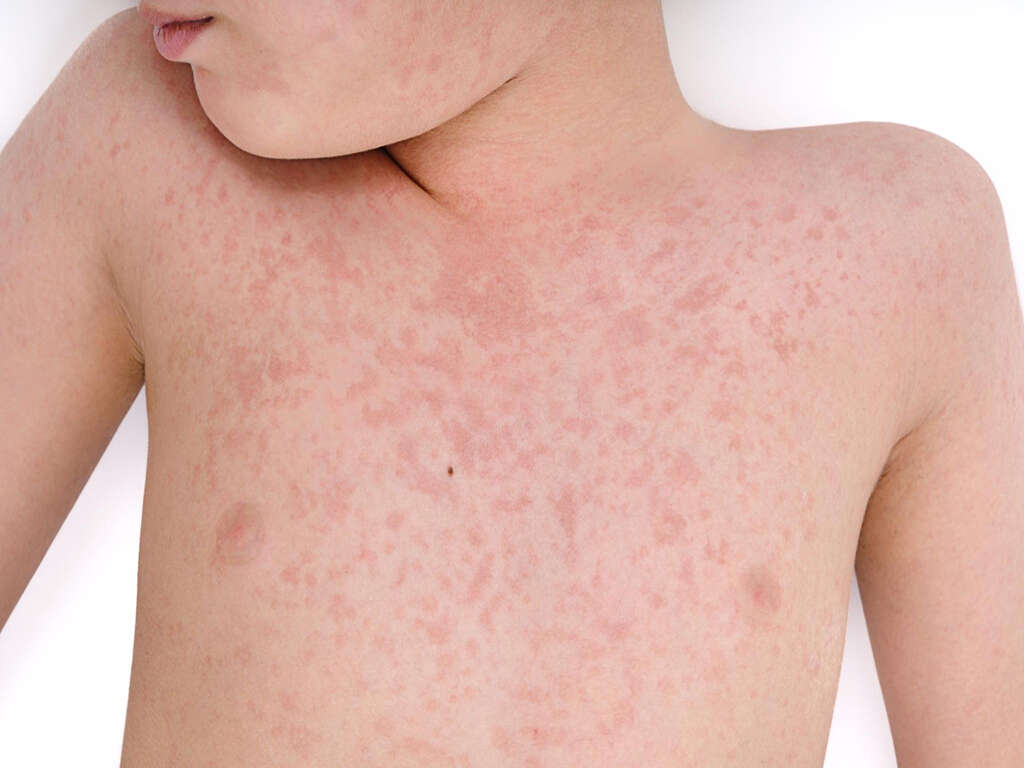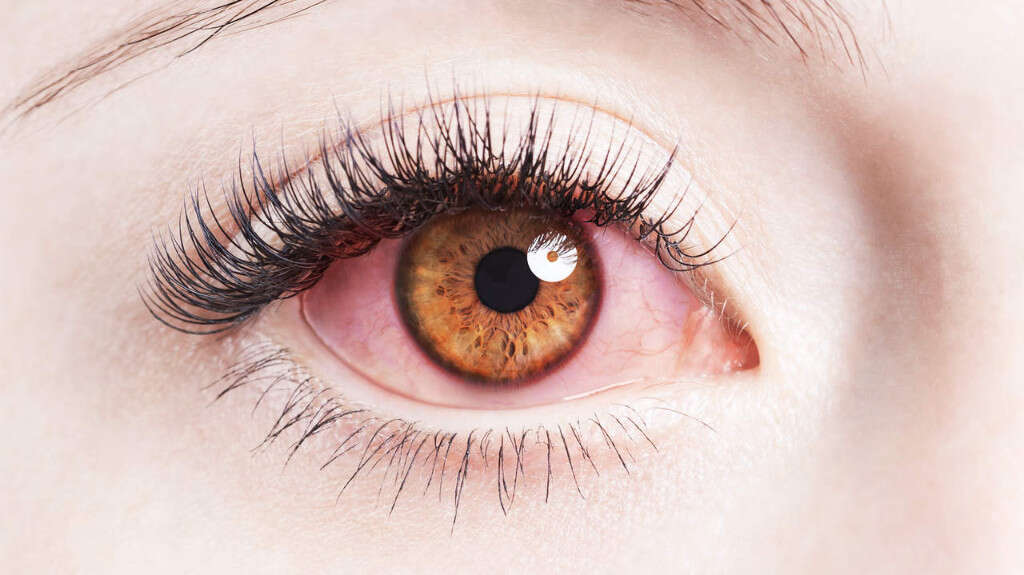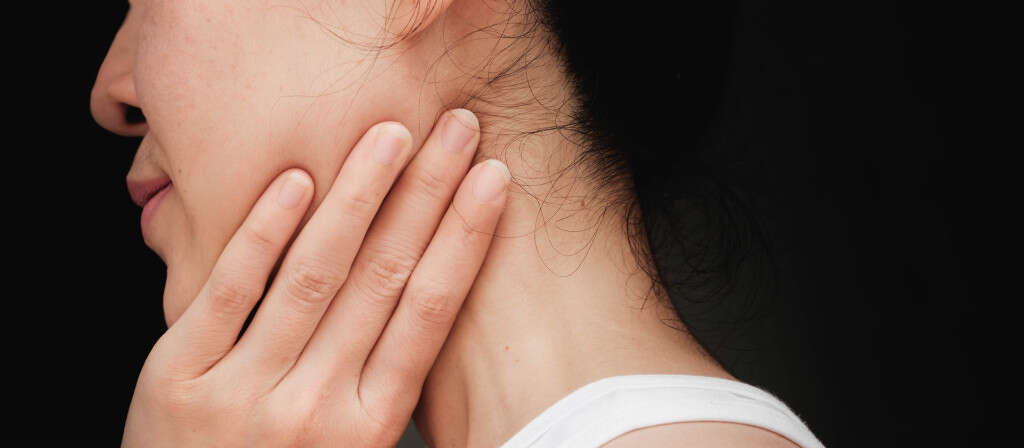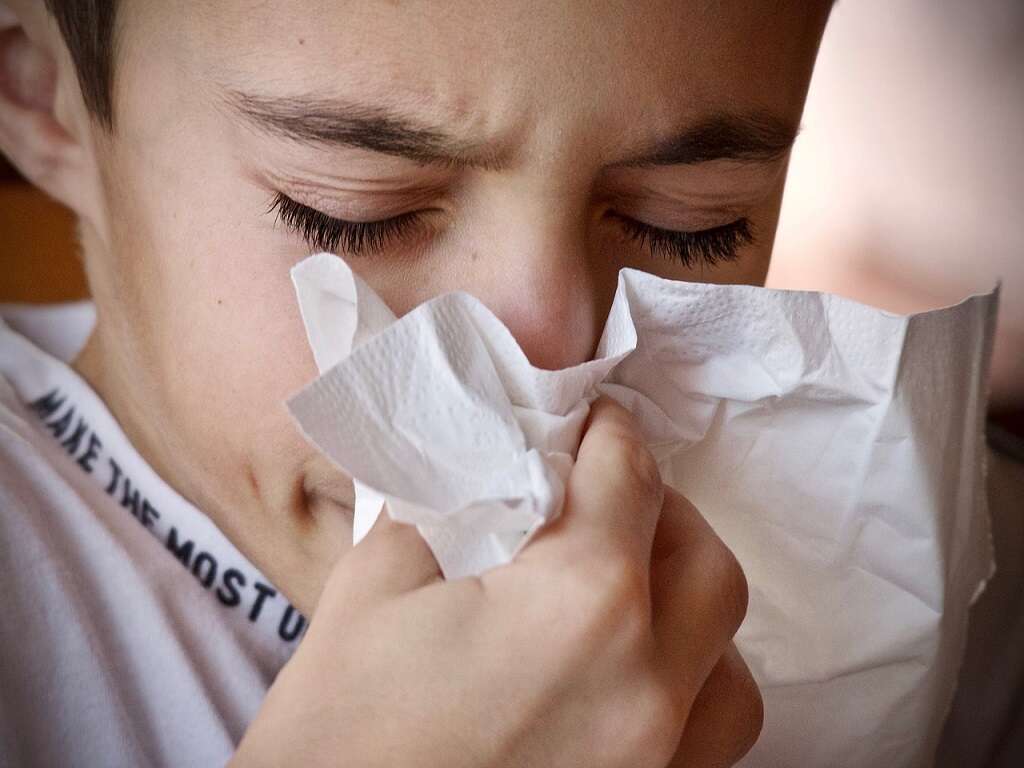10 Rubella Symptoms
Rubella, more commonly known as German measles or three-day measles, is a contagious disease caused by the rubella virus. Rubella is transmitted by airborne droplets from sneezing and coughing. Children and adults can get infected with rubella. It can have complications for pregnant women like miscarriage, stillbirths, or the transmission of rubella to the infant.
Worldwide it is estimated that there are 100,000 cases of congenital rubella syndrome each year. Infections are highest in countries that have the lowest rubella vaccination rates like Southeast Asia and Africa. Humans are the only known host of the rubella virus so it is a disease that can be eradicated.

Symptom #1: Fever
Rubella causes a mild fever that is usually around 102F or 38.8C. The fever is caused by the viral infection, and is the immune system’s way of fighting off the rubella virus. Because the fever is mild, there is no need to take medication. The incubation of the virus is two to three weeks.
Adults will have worse symptoms than children and will often experience mild fever one to five days before the rash and other symptoms appear. The fever usually lasts for several days. In itself, the fever does not cause any complications.

Symptom #2: Rash
The rubella rash usually appears on the face or behind the ears and spreads downward to the rest of the body. It can be differentiated from measles rash in terms of appearance. Rubella rash is often mild and pink unlike the bright red color of measles. The pink spots are often clustered together.
The onset of the rash means the manifestation of the rubella virus. The rash can sometimes be itchy, but it disappears by itself after three to five days. People are still positive with the rubella virus seven to ten days after the rash disappears.

Symptom #3: Conjunctivitis
Rubella causes the eyes to inflame making them appear bloodshot and itchy. Conjunctivitis is also known as pink eye and can make your eyes feel sore. After sleeping, the eyes may be difficult to open as drainage accumulates and crusts over the eye.
Conjunctivitis stays for several days and can be highly contagious, but it is often mild and goes away on its own. Special care should be taken to avoid its spread. It can be transmitted via hand-to-eye contact. Handwashing should be a ritual for individuals who have rubella conjunctivitis or those providing care for patients with rubella.

Symptom #4: Sore Throat
A sore throat is one of the cold-like symptoms of the rubella virus. Most of the time, sore throat is accompanied by other symptoms like runny or watery nose. For some, it is the only cold-like symptom that manifests. A sore throat is often mild and like other symptoms can go away on its own after three to five days.
Rubella in adults, however, is a prodromal illness and respiratory symptoms tend to be worse. It can also be present with other symptoms that have been mentioned. Throat secretions are one of the means of transmission, so hygiene and personal care are important.

Symptom #5: Runny Nose & Watery Eyes
Most adults who contract rubella experience all cold-like symptoms of a runny nose, watery eyes, and coughing. The fever and the cold-like symptoms usually appear before the rash and continue three to five days after the rash appears.
These cold-like symptoms often trigger sneezing and coughing which propels the virus into the air, which is its main means of transmission. Because adults will experience the symptoms of rubella worse than children, they need to manage the cold-like symptoms well. Once the sinus drainage becomes blocked and infected, it can cause ear complications. Patients can manage the symptoms like that of a regular cold.

Symptom #6: Lymphadenopathy
Lymphadenopathy or adenopathy is the swelling or enlargement of the lymph nodes. Swollen lymph nodes and rash are usually the physical symptoms that doctors look for when diagnosing rubella. The lymph nodes at the back of the neck or those behind the ears often become swollen and tender for individuals with rubella.
While this symptom can appear in children and adults, adults are more likely to notice it earlier than the rash and the fever. The nodes are pronouncedly more swollen when the rash manifests. In studies conducted on groups of pregnant women, lymphadenopathy is quite uncommon.

Symptom #7: Body Malaise
Body malaise is a condition that describes weakness felt in the joints and muscles as well as lethargy and fatigue. Individuals with rubella often complain of body aches, soreness in the body, and joint pains. Body malaise often accompanies fever in adults around two weeks after exposure to rubella. It can persist for four to five days and varies per individual.
Some patients report that the body aches go away after the rash appears while some can only recover after the rash resolves itself. Adults can take ibuprofen to get relief from the body aches. Seventy percent of women with rubella report joint pain.

Symptom #8: Headache
Rubella often comes with a headache. The pain induced by a headache is reported differently per person. Most patients report it as a simple tension headache while others report a migraine. Tension headaches feel like your head is being constricted while migraines are more complex and sometimes localized to a certain region in the head. Most adults complain of a headache together with the fever and the rash.
In general though and like most rubella symptoms, the headaches are mild. Pain management includes the intake of fluids to keep hydrated and taking paracetamol or aspirin. For children though, medication should always come from a physician.

Symptom #9: Earache
Earaches are most commonly felt in one ear although in some cases, both ears suffer. Apart from the pain, patients may also experience muffled hearing or fluid drainage from the ear. Earaches are a sign of viral infection. Although ear infections are rare, they can still happen to rubella patients. The cold-like symptoms can trigger an infection in the sinus nerve causing the ear infection.
Rubella can cause middle ear infection, or the inflammation of the eardrum, or labyrinthitis, which is an infection in the inner ear. Patients who feel a dull or burning pain in their ear should call their doctor.

Symptom #10: Stiff Neck
The stiff neck can be caused by swollen lymph nodes in the neck or the ear. The stiff neck will usually go away once the swelling of the lymph nodes has also reduced. If the stiff neck is persistent or is accompanied by an earache, headache, and dizziness, patients need to call their doctor right away. The stiff neck can be part of the symptoms of a rubella complication which is encephalitis. Encephalitis is a complication of the virus where the brain is inflamed. This complication, however, is rare and morbidity is also very low for rubella encephalitis.
Most rubella symptoms are mild and manageable. A persistent headache, earache, and stiff neck accompanied by drowsiness will need immediate physician care.











